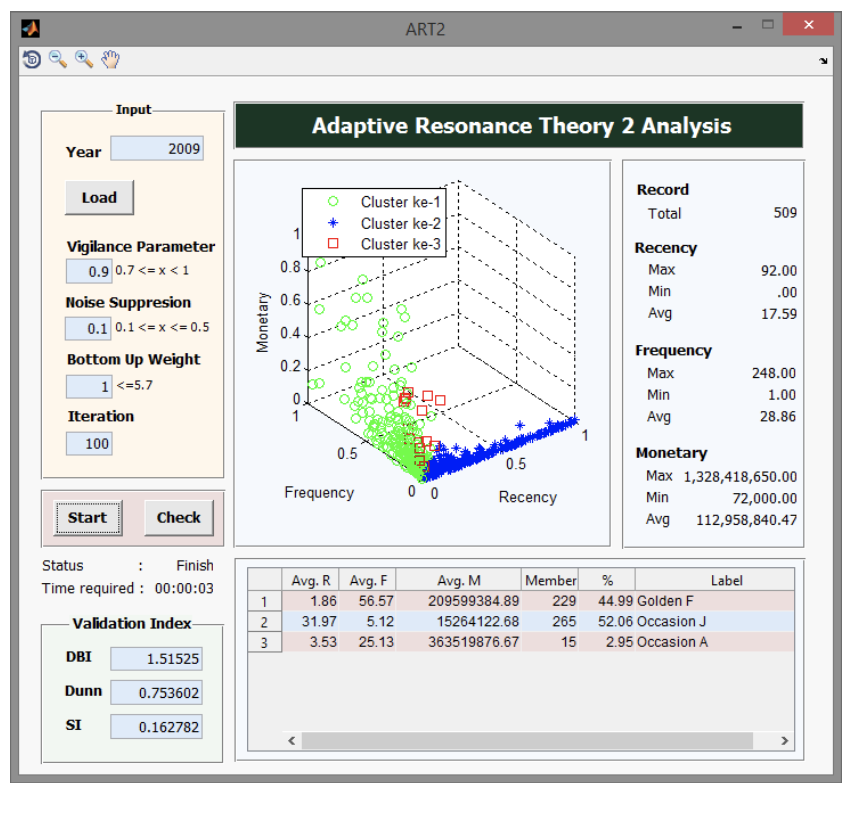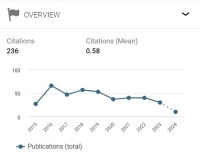Perbandingan Metode SOM/Kohonen dengan ART 2 pada Data Mining Perusahaan Retail
Abstract
Intisari—Penelitian ini ingin mengetahui unjuk kerja metode clustering data berbasis jaringan saraf tiruan. Menggunakan data set profil pelanggan UD. Fenny tahun 2009 dengan atribut Recency, Frequency dan Monetary. Metode clustering yang dibandingkan pada penelitian ini adalah Self Organizing Map dan Adaptive Resonance Theory 2. Evaluasi kinerja metode dilakukan dengan mengukur validasi index dari cluster yang terbentuk. Validasi cluster yang digunakan antara lain Indeks Davies-Bouldin, Indeks Dunn dan Indeks Silhouette. Hasil pengujian menunjukkan metode Self Organizing Map lebih baik dalam melakukan proses clustering data.
Downloads
References
[2] Cheng, C. H. & Chen Y. S. (2009) Classifying the segmentation of customer value via RFM model and RS Theory. Expert System with Application, 36, 4176-4184.
[3] Hughes, A. M. (1994) Strategic Database Marketing. Chicago: Probus Publishing Company.
[4] Nugraheni, Yohana (2013) Data Mining Using Fuzzy Method for Customer Relationship Management in Retail Industry. Lontar Komputer Vol. 4 No. 1, April 2013. ISSN: 2088-1541. Universitas Udayana.
[5] Smita, N., (2010) Potential use of Artificial Neural Network in Data Mining. Computer and Automation Engineering (ICCAE), 2010 The 2nd International Conference. Vol.2, 339-343.
[6] Ariana, A.A. Gede Bagus (2011) Customer Segmentation dengan Metode Self Organizing Map (Studi Kasus: UD. Fenny) Lontar Komputer Vol. 2 No. 1 Juni 2011. ISSN: 2088-1541. Universitas Udayana
[7] Ariana, A.A. Gede Bagus., Dita Andriawan, I Wayan (2014) Segmentasi Pelanggan PDAM dengan Metode Adaptive Resonance Theory 2. Prosiding Seminar Nasional Ilmu Komputer 2014. ISBN: 978-602-19406-2-4. Universitas Gadjah Mada Yogyakarta.
[8] Kohonen, T. (1990) The Self-Organizing Map, Invited Paper. Procedings of the IEEE, Vol. 78, No. 9, September 1990.
[9] Carpenter, G.A., & S. Grossberg (1987) ART 2: Self-organization of Stable Category Recognition Codes for Analog Input Patterns. Applied Optics. 26:4919-4930. A reprint from Applied Optics volume 26, number 23, December 1987.
[10] Yao, X. (1999) Evolving Artificial Neural Networks, Proceedings of the IEEE, 7(9):1423-1447, September 1999.
[11] Sivanandam, S. N., Sumathi, S. (2006) Introduction to Data Mining and its Applications. Spinger, Verlag Berlin Heidelberg.
Sivanandam, S. N., Sumathi, S., & Deepa, S. N. (2006) Introduction to neural networks using MATLAB 6.0. New Delhi: The McGraw-Hill Companies.

Keywords

This work is licensed under a Creative Commons Attribution-NonCommercial 4.0 International License.

This work is licensed under a Creative Commons Attribution 4.0 International License




